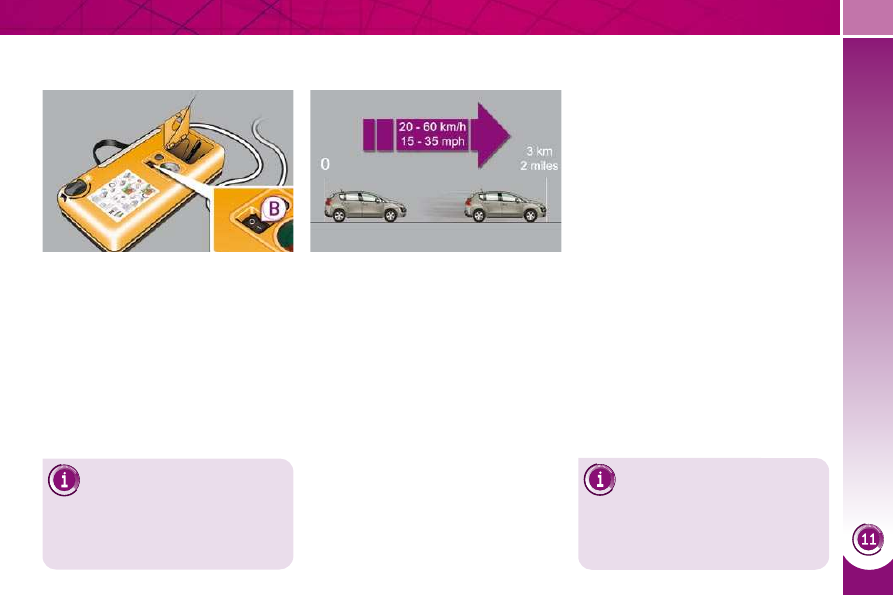Peugeot 3008 Dag (2010.5). Instruction - part 13

PR
A
C
T
IC
A
L
I
N
F
O
R
MA
T
IO
N
169
Remove the kit and screw the cap
back on the white pipe.
Take care to avoid staining your ve-
hicle with traces of fl uid. Keep the kit
to hand.
Drive immediately for approximately
three miles (fi ve kilometres), at reduced
speed (between 15 and 35 mph [20
and 60 km/h]), to plug the puncture.
Stop to check the repair and the tyre
pressure using the kit.
Switch on the compressor by mov-
ing the switch B to position "I" until
the tyre pressure reaches 2.0 bars.
The sealant is injected into the tyre
under pressure; do not disconnect
the pipe from the valve during this
operation (risk of splashing).
If after around 5 to 7 minutes
the pressure is not attained,
this indicates that the tyre is
not repairable; contact a PEUGEOT
dealer for assistance.
Tyre under-infl ation detection
If the vehicle is fi tted with tyre
under-infl ation detection, the
under-infl ation warning lamp will
remain on after the wheel has been
repaired until the system is reini-
tialised by a PEUGEOT dealer.